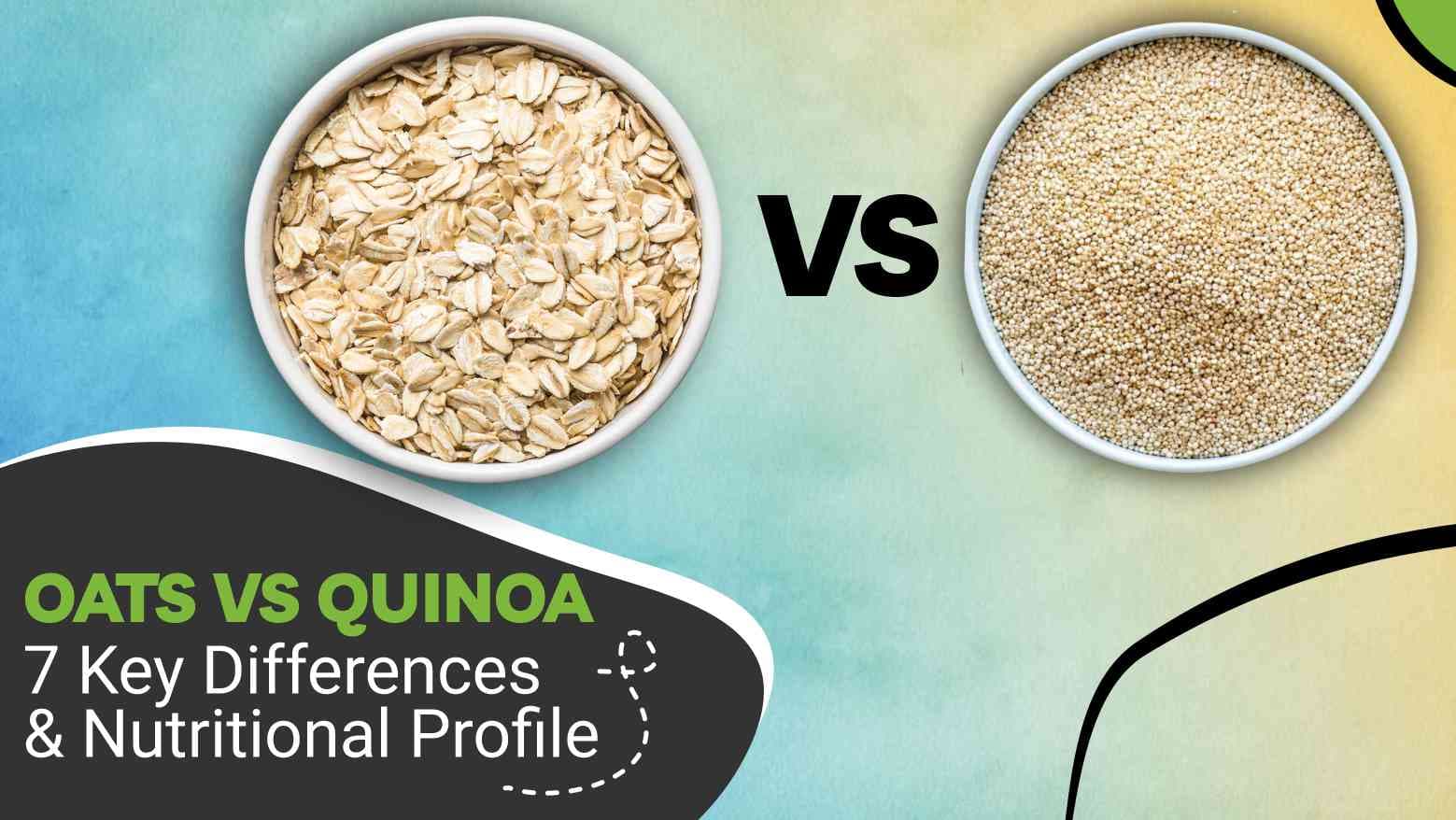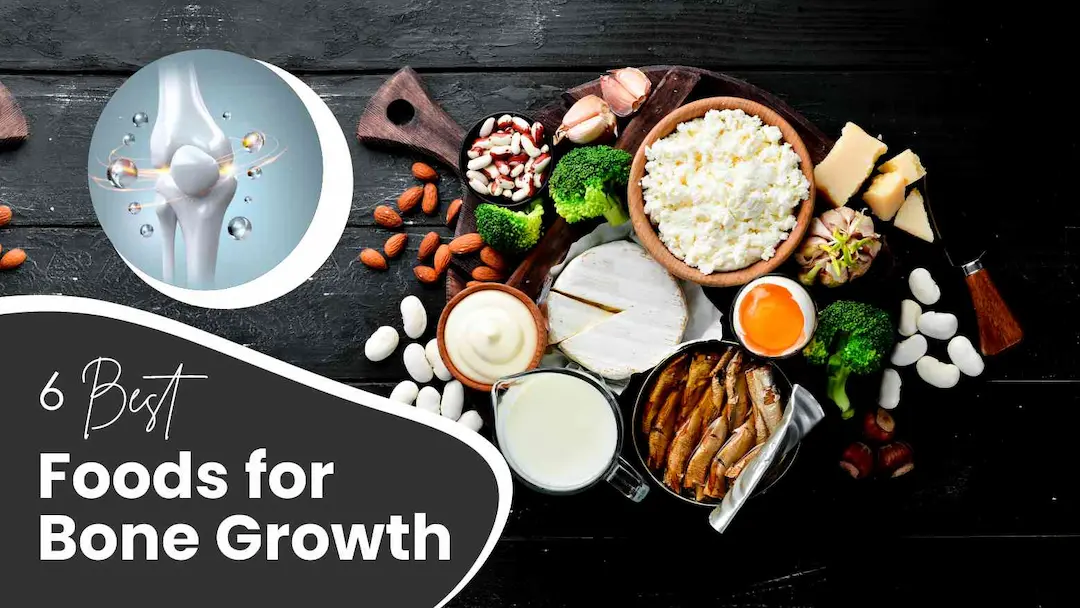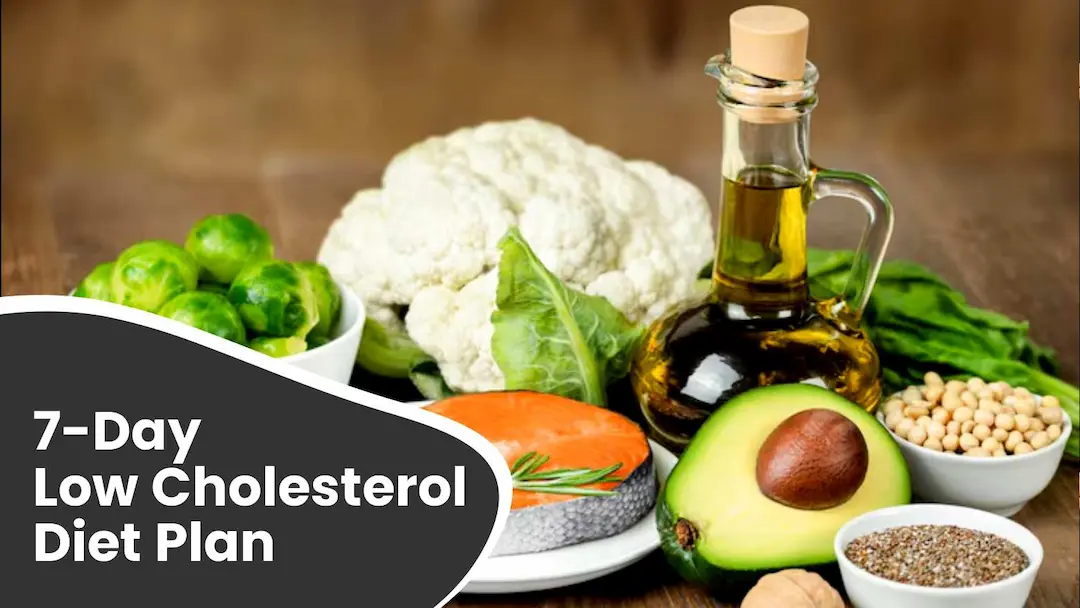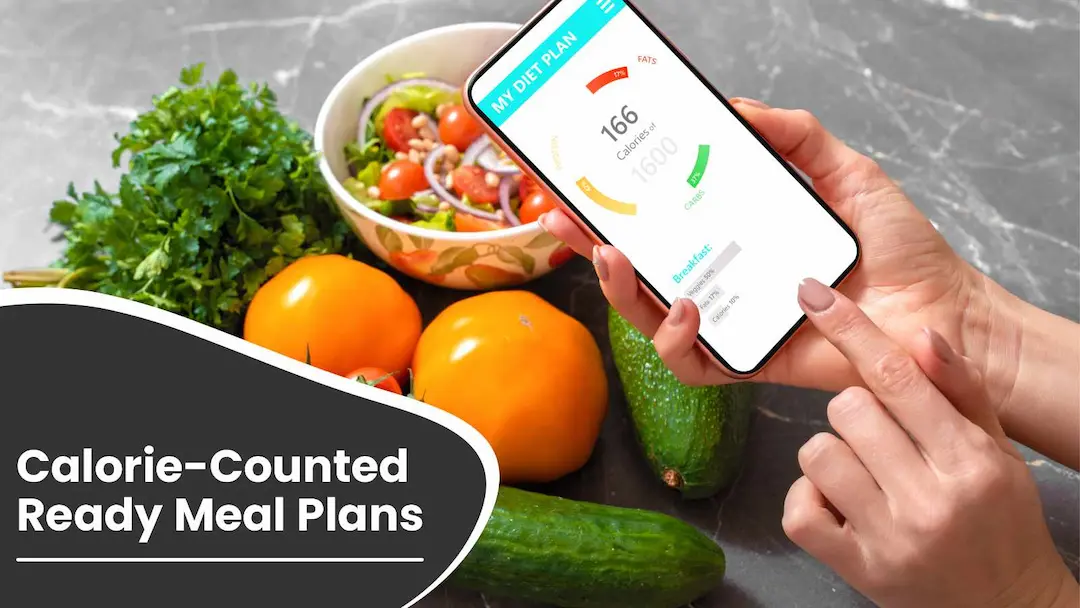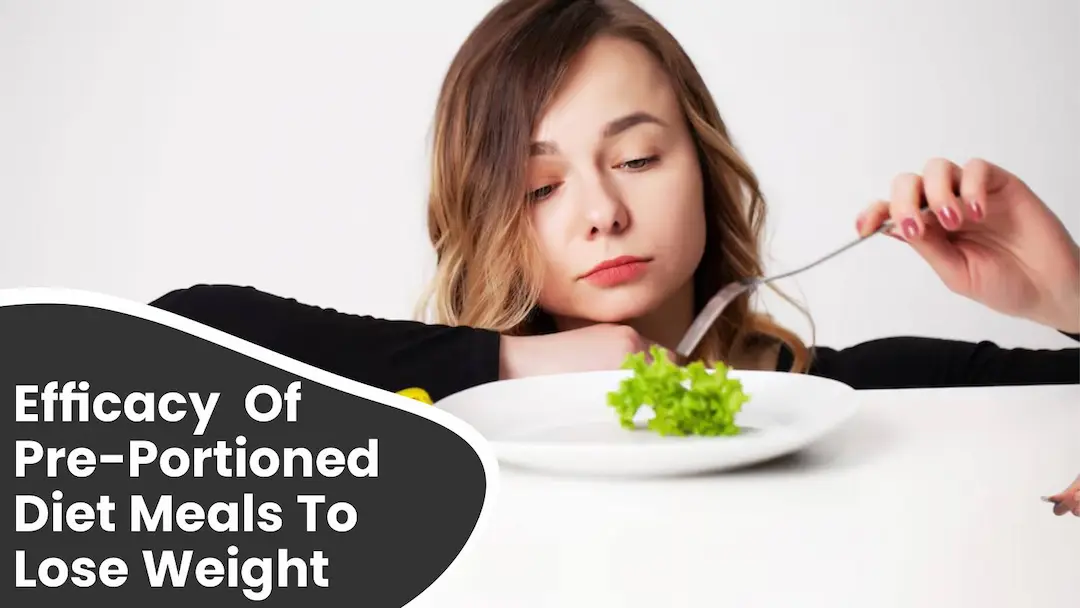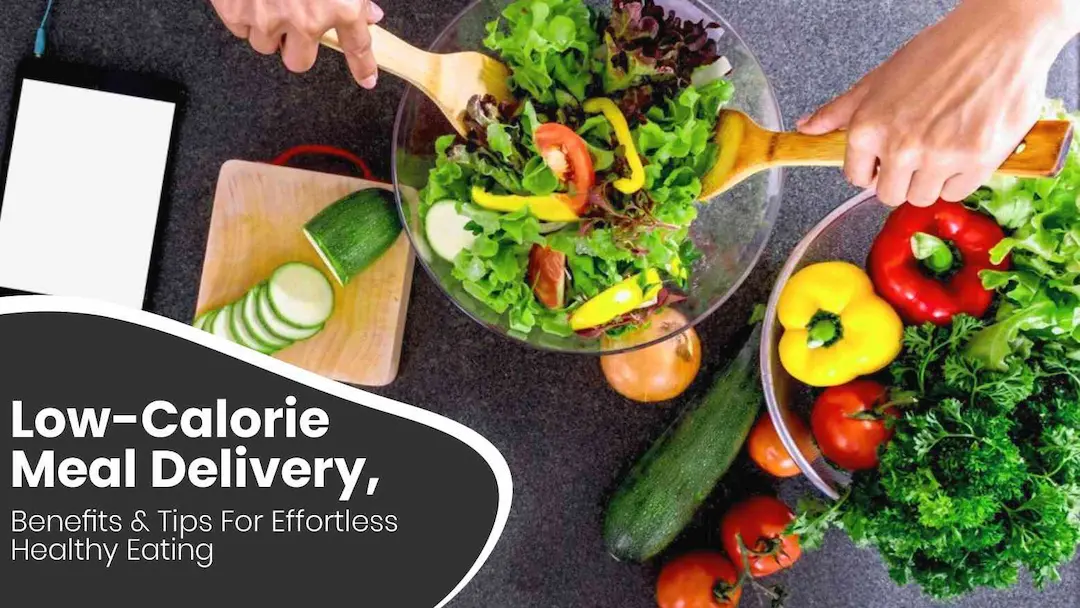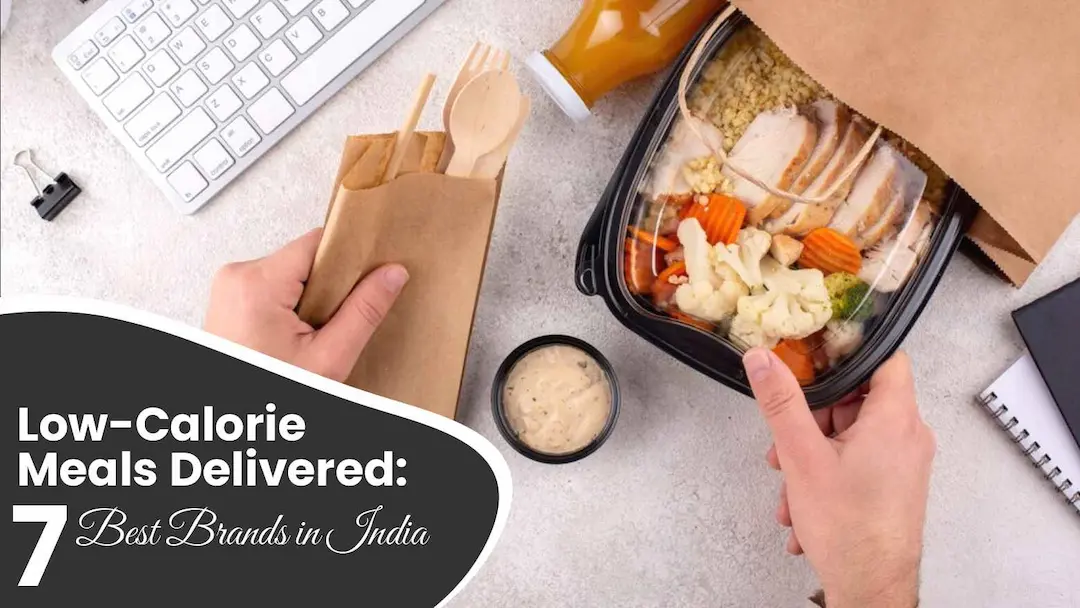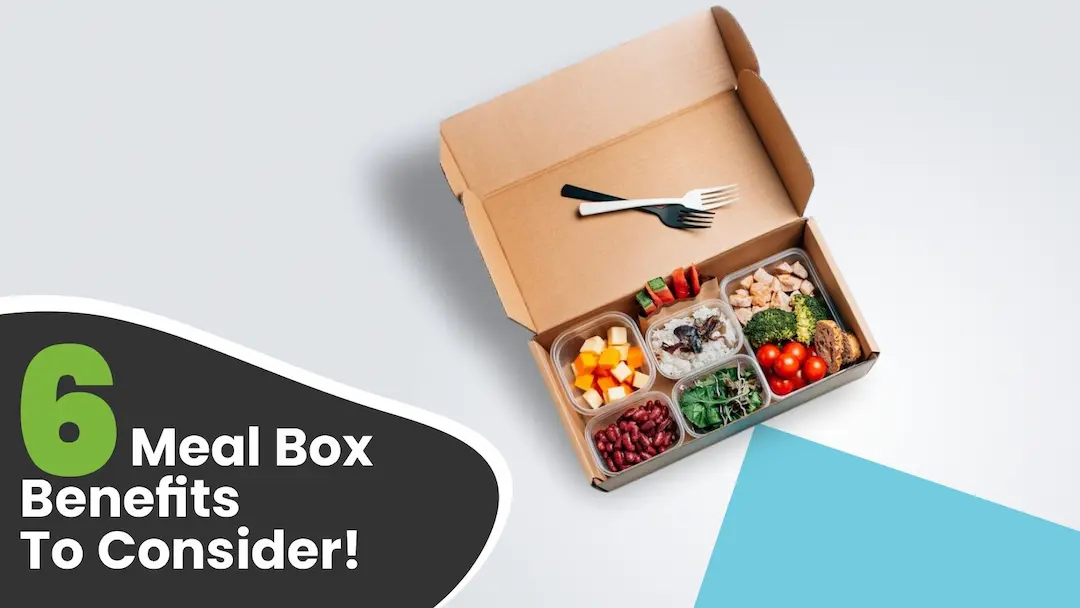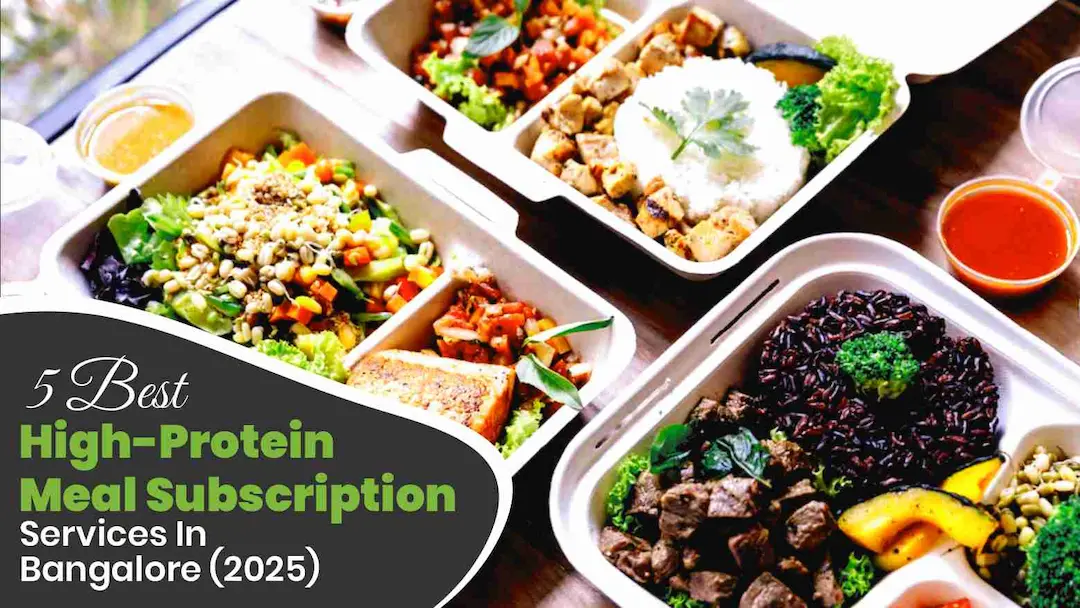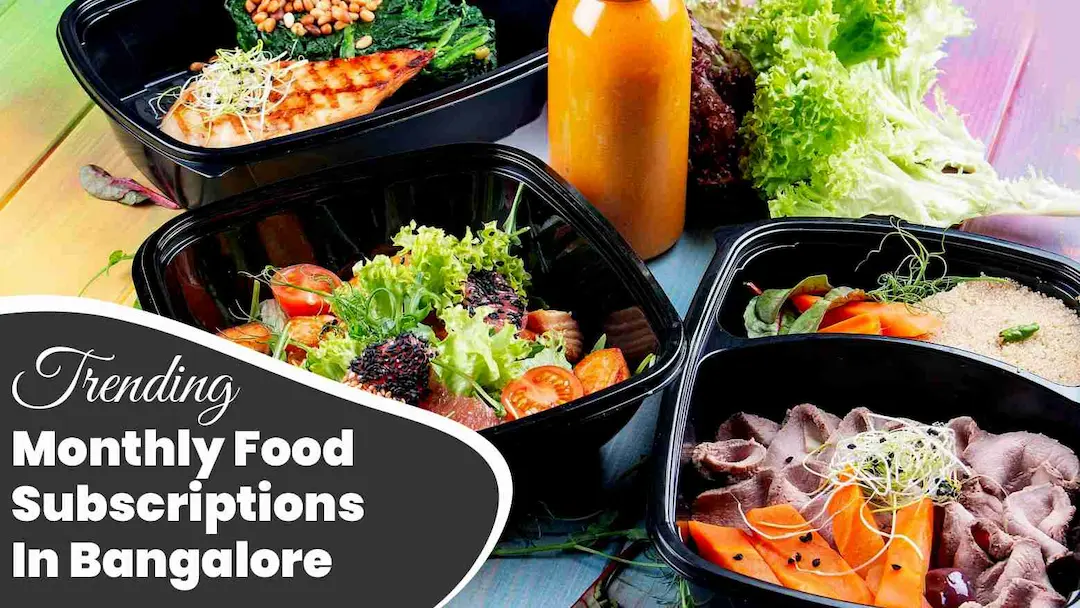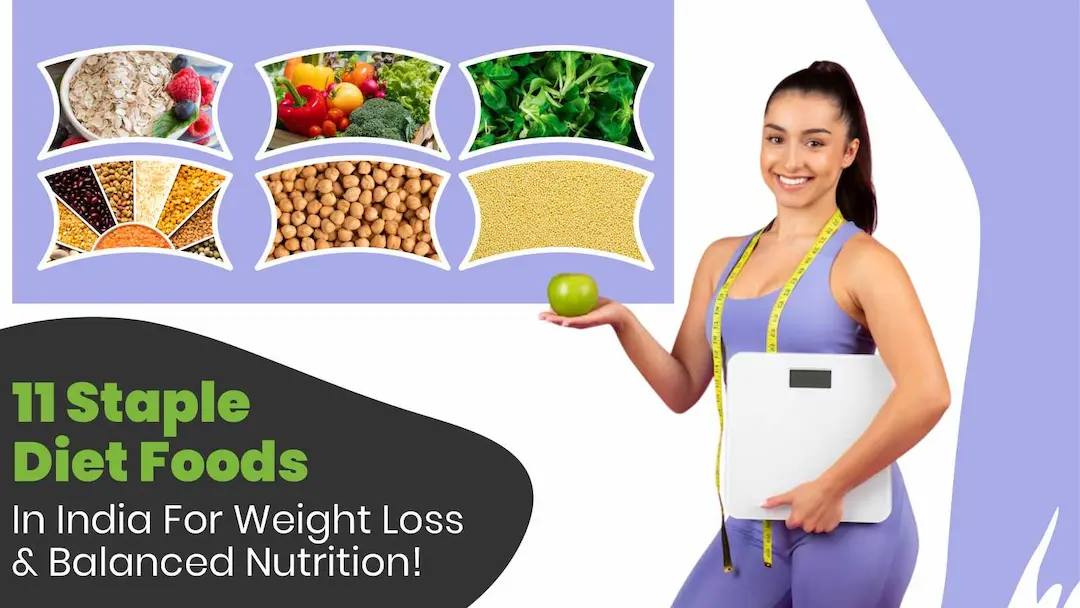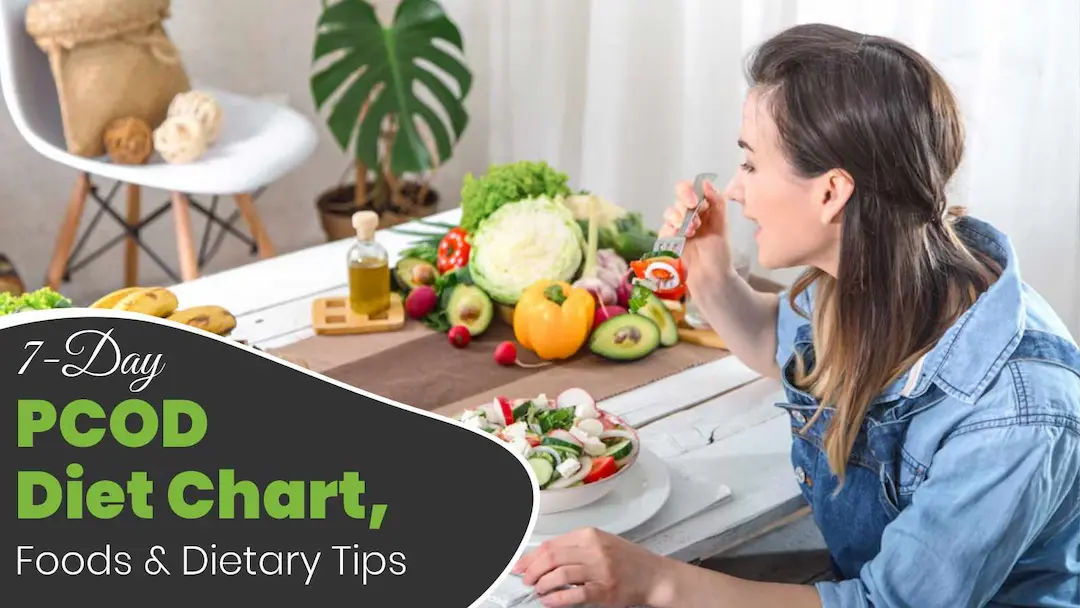Are you looking for a high-protein option for muscle building or a fibre-rich grain for better digestion? Making healthy food choices is overwhelming, especially when comparing oats vs. quinoa superfoods.
Oats, primarily composed of complex carbohydrates, provide long-lasting energy, while quinoa offers higher protein content, making it a great plant-based protein source. Both have their advantages, but the difference between quinoa and oats' impact on your health varies with your dietary preferences and fitness goals.
Whether you prefer a warm bowl of fruit oatmeal in the morning or a quinoa salad for lunch, knowing oats vs quinoa nutritional profiles will help you decide which grain suits your needs better. But which one is better for weight loss, energy, or wellness? Let’s explore their seven key differences in characteristics to find out the best dietary fit!
Table Of Contents
1. Which Is Healthier, Quinoa Or Oats? 7 Key Differences
2. Can I substitute Quinoa For Oats?
3. Oats VS Quinoa Nutritional Profile
4. The Final Say
5. FAQs
6. References
Which Is Healthier, Quinoa Or Oats? 7 Key Differences

Oats and quinoa are nutritional superfoods, but each has unique dietary benefits. So, which one comes out on top? It's not about one being "better" than the other, but understanding the differences between oats and quinoa to make the best choice for your needs.
You can visit ToneOp Eats to experience the taste and wellness of nutrient-dense and calorie-counted meals. Let's explore seven key ways these healthy grains stack up:
1. Oats Vs Quinoa: Grain Processing
The way grains are processed affects their nutrition and how well they fit into a healthy diet. Oats undergo different processing—steel-cut oats are the least processed as the beta-glucan foods, retaining more fibre and nutrients, while rolled oats are steamed plus flattened for quicker cooking. Instant oats, the most processed type, cook fast but lose some fibre and increase blood sugar more quickly.
Meanwhile, quinoa is a natural whole grain that must only be rinsed to remove its bitter coating (saponins) before cooking. Since it undergoes minimal processing, it keeps all its nutrients intact, making it a great option for those who want a whole, unprocessed grain.
Tip: If you want a less processed grain with more fibre, go for steel-cut oats or whole quinoa. If convenience is your priority, rolled oats or pre-washed quinoa are quick and easy options.
2. Protein & Fibre In Oats Vs Quinoa
Protein and fibre allow better digestion, muscle health, and staying full. Oats contain 2.5–3 grams of protein per 100 grams, making them a good plant-based protein source, but they lack some amino acids. However, with beta-glucan fibre, oats lower cholesterol and support heart health. Wholesome quinoa recipes provide 4.1 grams of protein per 100 grams and is a complete protein with all nine essential amino acids. It also offers 2.8 grams of fibre, which improves digestion and supports gut health.
Tip: Choose quinoa if you need a high-protein grain for muscle building. If fibre for better digestion and cholesterol control is your goal, oats are the best pick.
3. Oats Vs Quinoa: Gluten Content
Knowing whether a grain is gluten-free is crucial for people with excessive gluten intolerance or celiac disease. Oats are naturally gluten-free grains but are often processed with whole wheat, leading to cross-contamination. Those with gluten sensitivity should always buy certified gluten-free oats to be safe. Quinoa, on the other hand, is naturally 100% gluten-free and does not require any special labelling. This makes quinoa a better option for gluten-related issues.
Tip: If you have gluten intolerance, opt for quinoa or check the label on oats to ensure they are certified gluten-free.
Try ToneOp Care's Wheat Grass Powder for a natural boost to your health. Offering nutrients and antioxidants, this vegan and gluten-free powder is for detoxification, weight loss, and digestion. Enjoy the benefits of 100% natural wheat grass in every serving.
4. Oats Vs Quinoa: Taste & Texture
Taste and texture significantly affect how enjoyable a grain is to eat. Oats have a mild, slightly nutty flavour and become soft and creamy when cooked, making them perfect for warm, comforting meals. These gut-friendly, fibre-rich foods blend well with both sweet and savoury ingredients. Quinoa, on the other hand, has a light, slightly earthy taste with a fluffy yet slightly chewy texture. It holds its shape well, making it ideal for salads, grain bowls, or even replacing rice in meals.
Tip: Oats are a great choice if you prefer a creamy, porridge-like texture. If you want a grain that stays firm and works well in both sweet plus savoury dishes, quinoa is the better option.
5. Glycemic Index In Oats Vs Quinoa
The glycemic index (GI) measures how fast a food affects blood sugar levels. Lower GI foods help maintain steady energy levels and prevent sugar spikes. Oats have a GI ranging from 55 (steel-cut) to 79 (instant oats), meaning less processed oats digest slowly, while instant oats can cause a quicker rise in blood sugar. Quinoa has a lower GI of 53, making it a more stable choice for blood sugar control. Its higher protein and fibre content slows down digestion, keeping energy levels balanced.
Tip: If you need steady energy without sugar crashes, quinoa is the better choice. For a good low-GI option, pick steel-cut or rolled oats instead of instant oats.
6. Oats Vs Quinoa: Fatty Acids Profile
Even though both oats and quinoa are low in fat, they contain healthy fatty acids that support heart health. Oats have small amounts of monounsaturated and polyunsaturated fats, including omega-6 fatty acids, which help regulate cholesterol levels. Quinoa contains slightly more omega-3 fatty acids, which have anti-inflammatory benefits and are good for brain and heart health.
Tip: Quinoa is a better grain for its anti-inflammatory properties. If you prefer a low-fat, fibre-rich grain, oats work well, especially with nuts or seeds for extra healthy fats.
For an extra boost of omega-3 fatty acids, consider including ToneOp Care's Omega 3 Fish Oil Capsules 1000 mg. These capsules offer a concentrated dose of fish oil, rich in EPA and DHA, essential for heart health, brain function, and wellness. They also control blood pressure, prevent eye and skin ageing and increase bone density.
7. Oats Vs Quinoa: Cooking Versatility
Both oats and quinoa are versatile but used in different ways. Oats are best for sweet dishes like weight loss oats recipes, granola, or pancakes, but they can also be used in savoury porridges or as a thickener in soups. With its firmer texture, quinoa is great for both sweet and savoury meals—it can be used in salads, stir-fries, stuffed vegetables, or even made into flour for baking. It also works as a rice substitute for those who want a high-protein alternative.
Tip: Oats are a great option for a quick, warm breakfast. Quinoa is the better choice if you need a grain that can be used in multiple ways.
So, the right choice depends on your dietary needs. If you want fibre for digestion and heart health, go for oats. If you need a high-protein, gluten-free grain with a lower glycemic index, quinoa is ideal!
Also Read: Wheat Vs Oats: 7 Key Differences to Help
Can I Substitute Quinoa For Oats?
Yes, you absolutely can substitute quinoa for oats in many recipes! Both are healthy grains, but they bring slightly different things to the table. Oats are often loved for their creamy texture and mild flavour, making them perfect for cosy breakfasts. Quinoa, on the other hand, has a bit more of a nutty flavour and a slightly chewier texture.
So, when can you swap them?
- Breakfast: You can definitely make a quinoa "porridge" similar to oatmeal. Just cook the quinoa with milk or water, plus top it with your favourite fruits, nuts, and spices.
- Side Dishes: Instead of using oats in a savoury dish like a grain bowl, quinoa would be a delicious and nutritious alternative.
- Baking: In some baking recipes, you can replace oat flour with quinoa flour (though you might need to adjust the liquid content slightly).
Keep in mind that the texture and flavour will be a bit different, but it can be a fun way to mix things up and explore new tastes!
Also Read: 6 Nutritious Rice Flour Breakfast Recipes: Diet & Benefits
Oats VS Quinoa Nutritional Profile
Note this quick comparison of the nutritional profiles of cooked oats vs quinoa for reference, but remember these vary with the quantity and quality you prefer:
Nutrient | Oats (100g cooked) | Quinoa (100g cooked) |
Calories | 68 kcal | 120 kcal |
Protein | 3g | 4g |
Carbohydrates | 12g | 21g |
fibre | 2g | 3g |
Fat | 1g | 2g |
Iron | 1mg | 1.5mg |
Magnesium | 30mg | 64mg |
Potassium | 107mg | 172mg |
Zinc | 0.5mg | 1mg |
Folate | 14mcg | 27mcg |
Manganese | 1mg | 0.5mg |
Gluten | Often gluten-free (check label) | Gluten-free |
Also Read: 8 Health Benefits of Ragi Malt And Recipes
The Final Say
Ultimately, oats and quinoa offer recommended nutritional benefits, making them healthy superfood additions to a weekly nutritious diet. Whether you opt for creamy oats or fluffy quinoa, consider your taste preferences, dietary needs, and cooking time. Just remember that oats require more liquid and shorter cooking times, while quinoa benefits from a good rinse before cooking to remove any bitterness. With this, select the best fit from oats vs quinoa and enjoy healthy meals!
FAQs
1. What is healthier than quinoa?
While quinoa is a superfood, it's not the only healthy grain. Think of it like comparing apples and oranges – both are good, just different. Foods like amaranth, buckwheat, and even types of millet offer similar or even slightly higher levels of nutrients.
2. Which is better, quinoa or oats for weight loss?
Both quinoa and oats are great for weight loss! They're high in fibre, which helps you feel full and satisfied. Oats have a slight edge due to their higher soluble fibre, which helps manage appetite. However, the "better" one depends on how your body responds.
3. What are some quinoa and oats mixed recipes?
Try adding cooked quinoa to your oatmeal for a protein and texture boost. You could also enjoy a bowl with cooked quinoa and top it with oats and fruits. Another delicious option is to make a porridge with both grains, adding sweeteners to your liking.
4. Can I be allergic to oats or quinoa?
Yes, while less common than other allergies, it's possible to be allergic to both oats and quinoa. Oat allergies are sometimes confused with celiac disease, as oats sometimes get contaminated with gluten during processing. Quinoa allergies are rarer.
References
- https://www.soupersage.com/compare-nutrition/oats-vs-quinoa
- https://www.webmd.com/diet/health-benefits-quinoa
- https://wholegrainscouncil.org/whole-grains-101/easy-ways-enjoy-whole-grains/grain-month-calendar/oats-%E2%80%93-january-grain-month/health
- https://nourishyou.in/blogs/learn/quinoa-vs-oats-which-superfood-is-healthier?srsltid=AfmBOoquXdUyGnbpx2VTOxbUBloU6cpaGHKLWsMq9e1vaypKrLj0-OS-
- https://www.lybrate.com/topic/oats-vs-quinoa/a04be61f4d2d95824bf8f90e85e9d384
- https://glutenfreeonashoestring.com/gluten-free-oat-substitute/
- https://foodstruct.com/nutrition-comparison/oats-vs-quinoa-cooked
About ToneOp Eats
ToneOp Eats is your go-to health kitchen, delivering nourishing meals in Bhopal, Indore & Bangalore. The meals are prepared with strategically planned nutrition and portions for your health goal. With just three simple steps, you can subscribe to a meal plan for weight loss, muscle gain, or balanced diet goals. Experience the perfect taste and wellness in our nutrient-dense and calorie-counted range of meals, including protein-rich grills and meal bowls, full of fibre salads & smoothies, workout-friendly protein 30,40,50 meals and refreshing juices.







